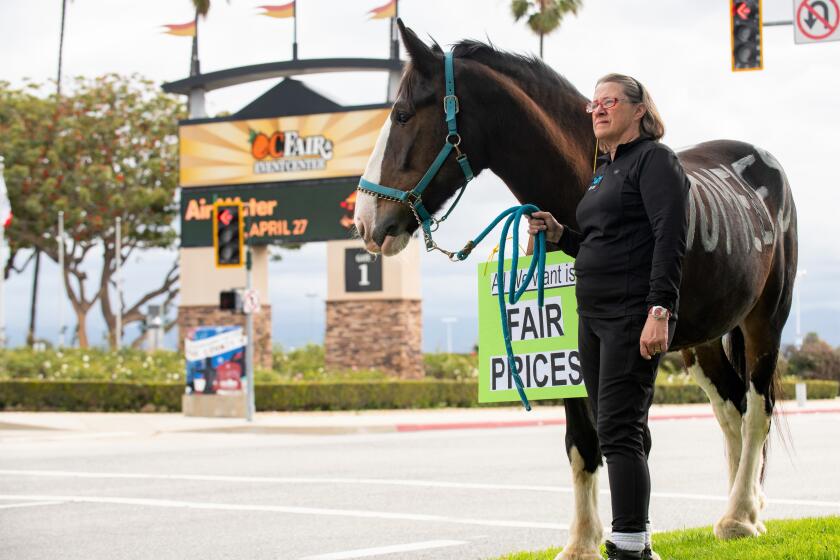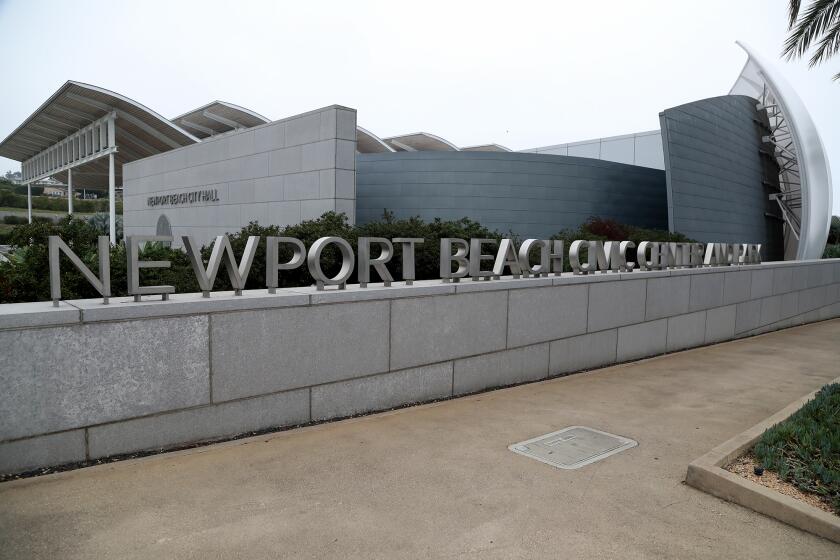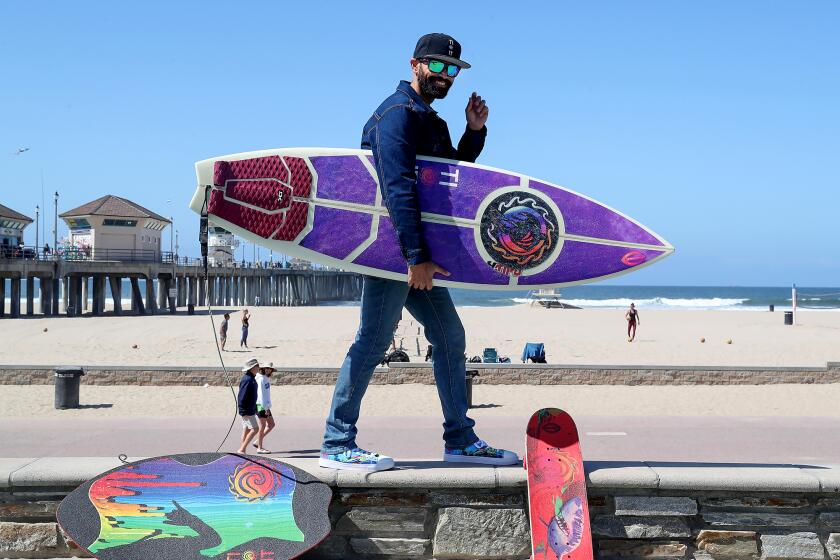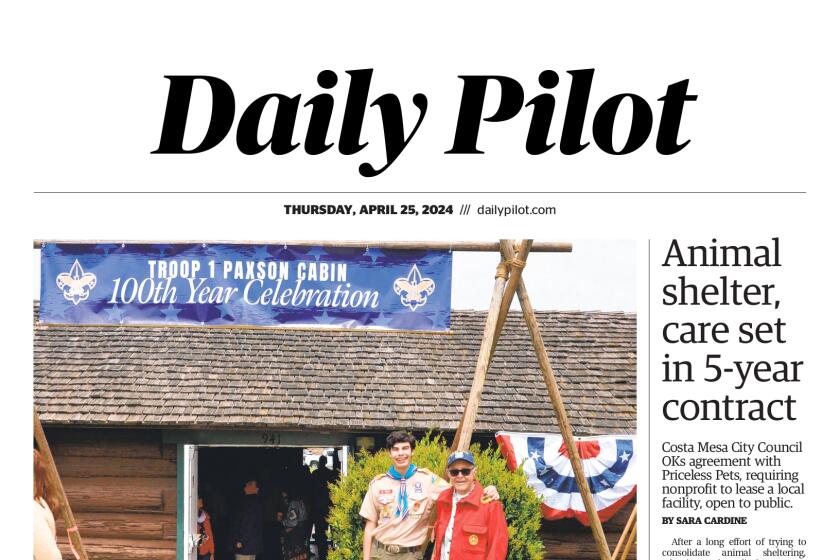Newport Beach to divert often-contaminated storm drain from the bay to the sewer
Newport Beach is cleaning up its bay by cutting off a storm drain confluence that has shown to be a significant source of fecal coliform bacteria.
After years of talk about how to clean up the often exceptionally high concentration of fecal coliform bacteria in Newport Harbor at the Newport Boulevard bridge — the output of two storm drains discharging urban runoff — the city’s public works department has secured a state grant worth more than $800,000 to build a storm drain diversion straight into the local sewer system.
Except on days where rainfall exceeds a quarter-inch, the roughly 50,000 gallons per day of runoff will flow into the sewer at a bypass to be built underground in the area of Newport Boulevard and West Coast Highway.
The Arches drain outlet, so called for its proximity to the famous local restaurant, is the dump point from a drain to the west, which collects runoff from Hoag Hospital and areas upstream, and a drain to the east, which runs along Old Newport Boulevard and into Costa Mesa upstream of 15th Street.
Public Works Director Dave Webb said the city has successfully used this diversion process in other areas where bacteria levels were higher than state limits.
In addition to the $819,500 grant from the State Water Resources Control Board under its Clean Beaches Initiative, the city will pitch in about $90,000 in local funds.
Work should start this fall.
Although occasional sewage spills temporarily close short stretches of beach and harbor to swimming, the consistently high bacteria levels near the bridge have earned the spot the dubious distinction of a standing warning since 1999. It’s the only long-term warning in the county.
Fecal coliform bacteria like E. coli can cause the gastrointestinal illness commonly known as the stomach flu. For a single sample, the maximum amount is 400 organisms per 100 milliliters of sample, according to state code.
According to county data, from 2017 to date, the fecal coliform levels near the bridge are usually well under the state limit but have exceeded it several times, including to about 5,100 units last November, more than 10,000 units on Jan. 11, and to about 20,000 units on Feb. 23.
Twitter: @Daily_PilotHD
All the latest on Orange County from Orange County.
Get our free TimesOC newsletter.
You may occasionally receive promotional content from the Daily Pilot.




